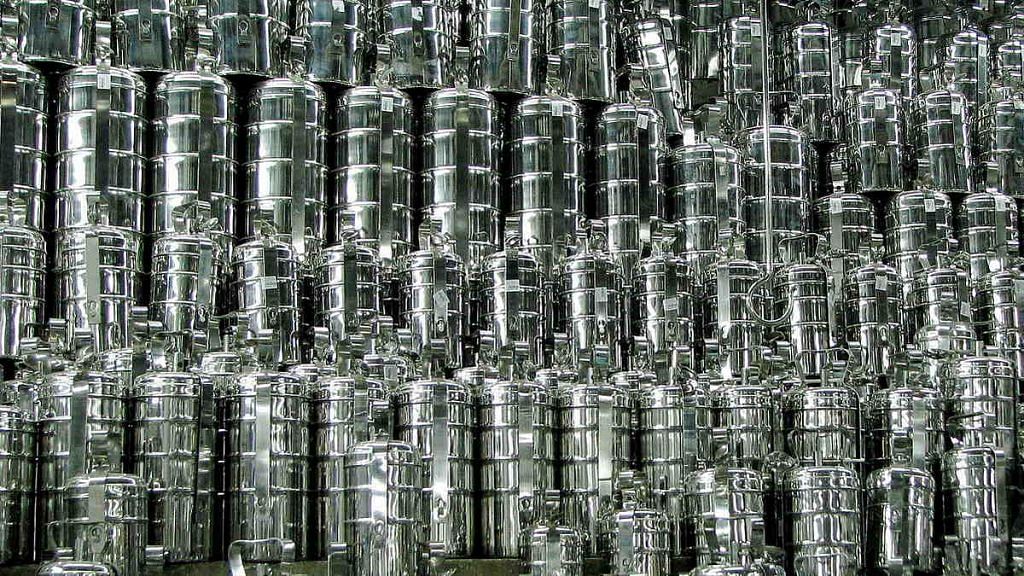New Delhi: The Russia-Ukraine war has sent global commodity prices in a tizzy. The prices of nickel, in particular, have shot through the roof, given that Russia is a major producer, and the effects are being felt all over the world. India does not import nickel from Russia (which controls almost 8 per cent of the global supply) but it is still feeling the squeeze, since the overall supply has been affected and caused extreme price volatility.
Perhaps the most affected industry in India on account of this is stainless steel, which is a major importer of nickel.
On 7 March, the price of nickel reached $100,000 per ton on the London Metal Exchange, after which the exchange had to suspend trading. While the price of nickel has cooled down significantly from those highs, it continues to affect stainless-steel manufacturers and thereby the end consumers. On Friday, the price of nickel was at $35,500 per ton.
While there are fears that there may be a price rise in stainless steel goods — from cutlery to surgical instruments to automobile components — the steel industry in India is using various strategies to mitigate the effects of the price volatility in international nickel prices. ThePrint explains how.
Also Read: India’s big wheat opportunity: How Delhi can make up for export shortfall from Russia, Ukraine
Moving to different grades of steel
Stainless steel manufacturers in India are trying to mitigate the price volatility in international nickel prices by ensuring that they have enough inventory to insulate themselves from the crisis.
K.K. Pahuja, who heads the Indian Stainless Steel Developers Association (ISSDA), told ThePrint that the only way the industry is able to tide over the current crisis is by moving to different grades of stainless steel that do not require a high quantity of nickel.
He explained that there are essentially three grades of stainless steel that are used by Indian manufacturers. The first is 300 series, or austenitic, stainless steel, which uses around 20 per cent nickel as a major alloying addition.
The second is 200 series stainless steel, which uses around 4-6 per cent of nickel. And the last grade is ferritic stainless steel, which does not require nickel.
“To ensure that consumers are not affected much, most manufacturers of stainless steel have moved towards the second and the third category. But there are some industries, like food processing, that have to mandatorily use the 300 series grade… They have continued to use it,” Pahuja said.
When asked about the impact on the price of end products of stainless steel, Pahuja said that since prices are sensitive and competitive, companies do not reveal the prices at which they sell stainless steel. And therefore, it would be difficult to determine the exact hike in prices of the commodity.
Updating prices in real time, flexible product mix, scrap to the rescue
To hedge their risks, most stainless steel manufacturers have applied different strategies so that the customers do not bear the brunt of high nickel prices.
One of the top manufacturers of stainless steel in India, Jindal Stainless, for example, synchronises what it sells and the raw material it procures on a real-time basis, which insulates the company from the volatility in input prices — in this case, nickel.
“The majority of the company’s orders come from long-term quantity contracts with our customers. We have a diversified mix of portfolios between high nickel as well as low or no-nickel product range,” Abhyuday Jindal, managing director of Jindal Stainless Ltd. (JSL), sai.
“Our production lines are capable of churning out a flexible product mix in line with the market demand and raw material availability,” he said.
For JSL also, the dependence on Russia for raw material sourcing is very low. The company sources the majority of its nickel demand from scrap and nickel pig iron. These are majorly sourced from within India, South-East Asian countries such as Indonesia, and some quantities from Europe, the company said in a statement.
Market experts also believe that stainless steel makers have not been as challenged since they were able to balance domestic orders with international ones.
Ashima Tyagi, who tracks the Indian and Asian steel markets closely for S&P Global, said stainless steel mills in India have been able to navigate the repercussions of the spike in global nickel prices, partly on account of their reliance on stainless steel scrap as the main raw material, which includes nickel. Therefore, their need to source pure nickel is reduced.
“A diversified pool for domestic and international raw material procurement strategies alongside a strong order book position, comprising both domestic projects and exports, have allowed them to tide over the current uncertainties,” she said.
According to Joint Plant Committee data published by the Ministry of Steel, during April 2021–February 2022, India has exported nearly 1 million metric ton (MT) of alloy or stainless steel to countries like Italy (128,000 MT), Russia (68,400 MT), Indonesia (56,900 MT), Belgium (45,500 MT) amongs others.
(Edited by Asavari Singh)
Also Read: Russia-Ukraine conflict looms over India’s steady economic recovery
